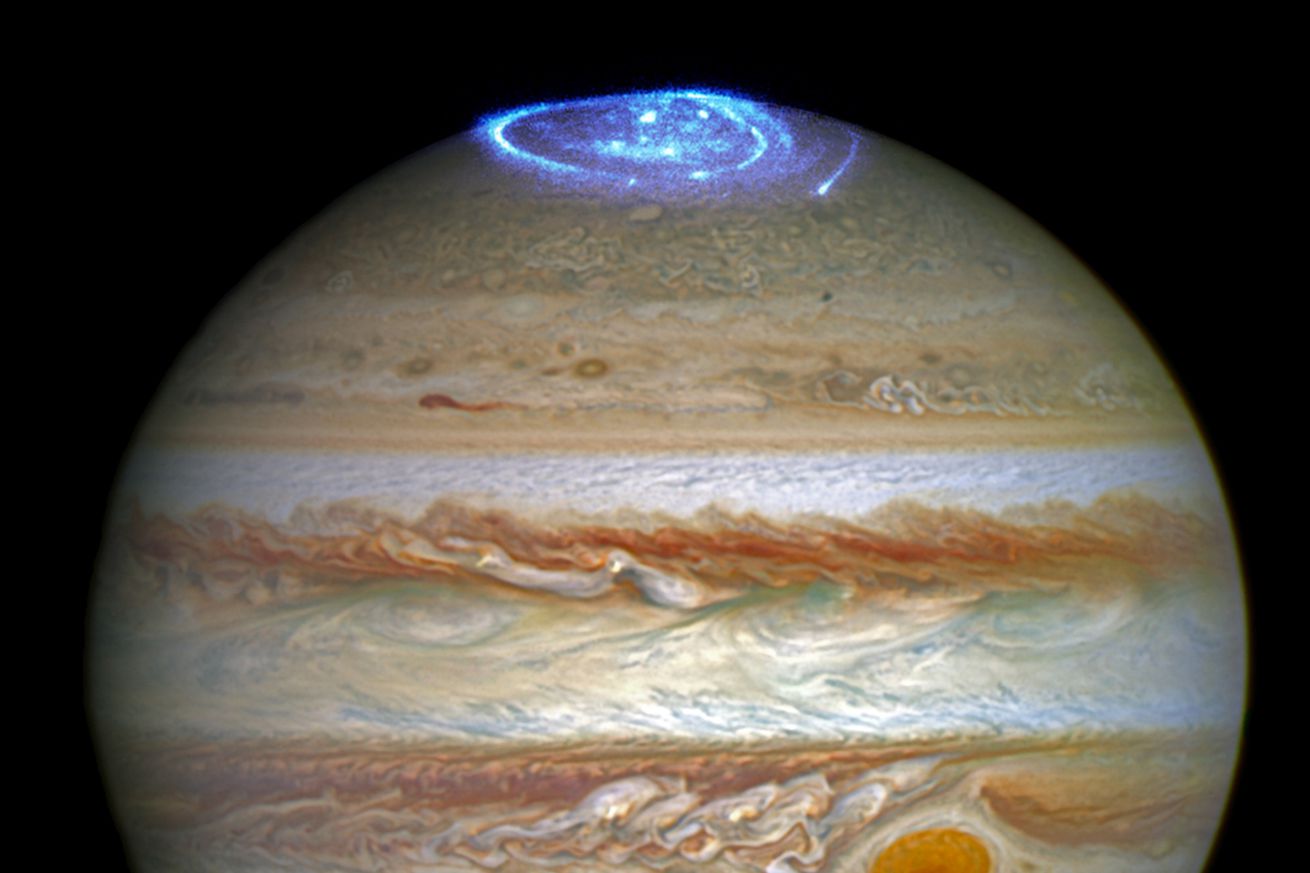Jupiter's vividly glowing auroras have a mysterious power source:
For the first time ever, NASA’s Juno spacecraft has spotted electrons being fired down into Jupiter’s atmosphere at up to 400,000 volts. That’s an enormous amount of energy that gives rise to the planet’s glowing auroras. These incredibly high voltages, however, are only spotted occasionally — and that’s raising questions about what exactly is behind some of the planet’s most vivid glows at the poles.
The discovery,
detailed in a study published today in Nature, was made possible by the instruments on board Juno, which has been orbiting Jupiter for a little over a year, passing by the poles closer than any other spacecraft has before. It confirms, in part, what astronomers expected, but it also shows that Jupiter’s auroras behave...
Continue reading…

